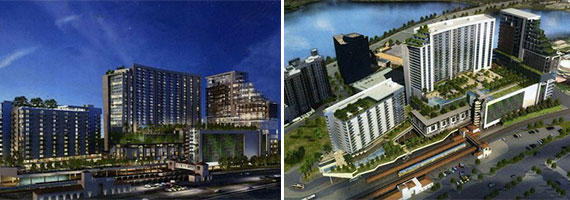Trending
West Palm Beach going green on rooftop parking decks

More green rooftops will be sprouting in West Palm Beach, after the city’s Downtown Action Committee has approved a proposal that would require future buildings with rooftop parking decks to devote at least 30 percent of the decks’ surface to either landscaping or floor murals.
Some local developers and property owners say they support the concept. “Anytime you can reduce the amount of exposed concrete, it’s a good thing,” Tony Solo, a real estate developer and business owner in downtown West Palm Beach who formerly owned the property at 501 Fern Street.
For people in tall buildings who look down on rooftop parking decks, all the concrete, cars and machinery is an eyesore, he said. “Often architects and planners don’t take into account that the majority of people living or working downtown have to look down. When it’s air conditioning and mechanical systems, it’s not so pleasant.”
West Palm Beach’s $300 million Transit Village development, which also has been approved by the Downtown Action Committee, is ahead of the new rule. It already has plans for greenery and art on the roofs of buildings, including the parking garage, at its mixed-use project to be located on 6.6 acres at Banyan Boulevard and Tamarind Avenue.
“We are proactive about reducing our carbon footprint” through the presence of greenery, Bruce Lewis, public information officer for the site’s developer, Transit Village LLC, told The Real Deal. “I think if the intent is truly to reduce the carbon footprint, then the rule is a good idea.”
In 2009, the city placed a ban on rooftop parking on new buildings, but didn’t implement any requirements for landscaping or art. Given all the high rises built in downtown West Palm Beach over the last 15 years and the new ones planned, rooftops have become a “fourth façade” for buildings, City Urban Planner Ana Maria Aponte told the Downtown Action Committee earlier this month.
“This is what I think the city should strive for — to include some regulations that really encourage developers to do this, even in locations where they are not using it for amenity decks,” Aponte said. The proposed rule will be presented to the city commission next month.
Yet not everyone is in agreement.
Nader Salour, whose Cypress Realty just completed the first half of its Loftin Place apartment project at 805 North Olive Avenue, approves of the idea, but says it goes a bit too far. “It’s a step in the right direction, but I think the 30 percent requirement is excessive,” he told TRD. Developers should have more flexibility than the 30 percent requirement allows in determining how they beautify the rooftop decks, Salour said.
The roof of his building has no parking, in compliance with the current rule, and putting that unused concrete slab on top of the structure would cost more than $150,000, he said. “I wish they had the new rule in place before I built the building. Maybe it will be in place for phase two. This definitely goes down the right path. They just have to fine tune it.”




